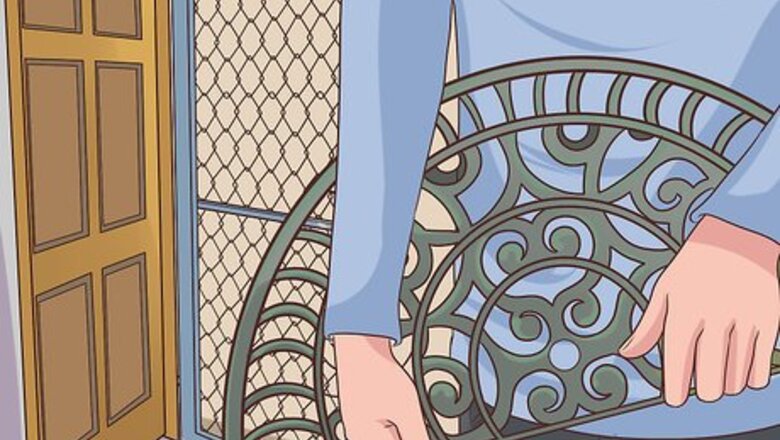
views
Cleaning Wrought Iron
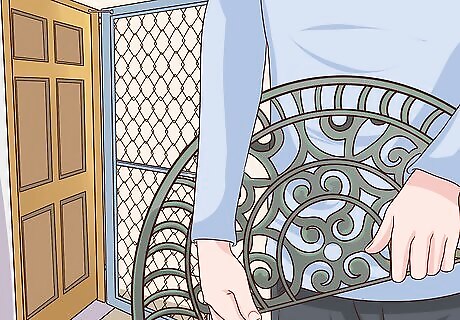
Clear a space to clean your item. Choose a spot either inside or outside your home that you don’t mind getting a little wet and dirty. It should be an area that you’ll be able to easily clean up once you’re finished. This will be a messy - and wet - process.
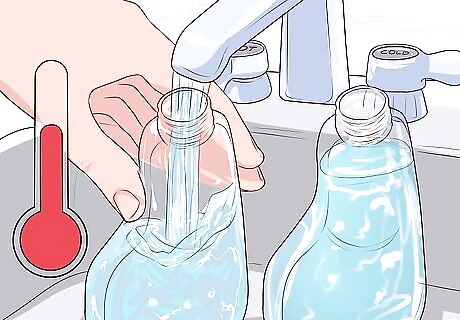
Fill two buckets or spray bottles with warm water. You’ll need to both wash and rinse your wrought iron. One of your buckets or spray bottles will be reserved for just rinsing, and this one will be filled with only water. Be sure that the water isn’t too hot. You don’t want it to burn your hands when you begin cleaning your item. If you are cleaning large items such as furniture, a bucket may work best. For smaller items, a spray bottle may be more useful. If you are cleaning outdoor wrought iron furniture or railings, it may be easier for you to use a garden hose to rinse these items. If you have access to a hose, you’ll only need to fill one bucket with water.
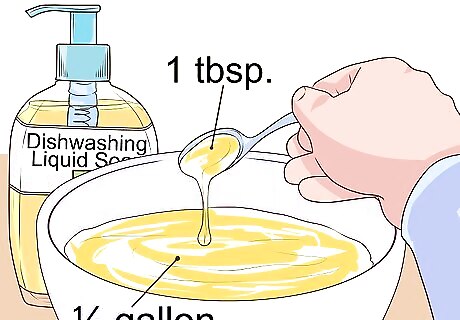
Add soap to water. You’ll want to use a mild cleanser such as dish soap or a household cleaner to gently clean the wrought iron without damaging it. Be sure to avoid antibacterial soaps or cleansers that contain bleach. Add 1 tbsp. (14 mL) of soap to 1 qt. (946 mL) of water. If using a household cleaner, use 1/4 cup (59 mL) to 1/2 gallon (1892 mL) of water.
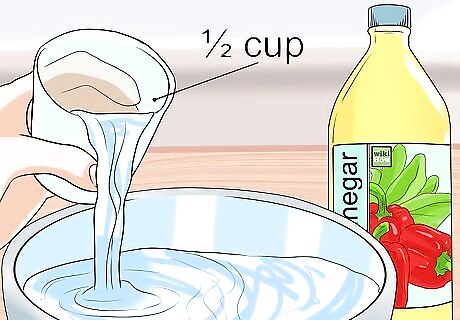
Use vinegar for a milder cleaning option. If you are cleaning wrought iron that is kept indoors, distilled white vinegar can be substituted for soap. For outdoor items, vinegar may not be a strong enough cleaner to remove the dirt. Add 1/2 cup (118 mL) white vinegar to ⁄2 gallon (1.9 L) (1892 mL) of water.

Remove non-wrought iron materials from your item. You want your piece to be completely bare so that nothing stands in the way of the cleaning process. Take off all cushions, pillows, and coverings. If your wrought iron item is made out of multiple materials, such as a bench with a wooden seat and iron sides, you may not be able to isolate the wrought iron. If this is the case, clean carefully in the places where the two materials meet. You can also try wrapping the non-wrought iron parts of your piece in plastic wrap.

Soak a sponge or washcloth with your cleaning solution. Don’t worry about squeezing the excess water from your sponge. You’ll want plenty of soapy water to ensure that you reach every nook and cranny of your wrought iron item. If you are using a spray bottle, spray the sponge or cloth with your cleaning solution until it’s thoroughly dampened.
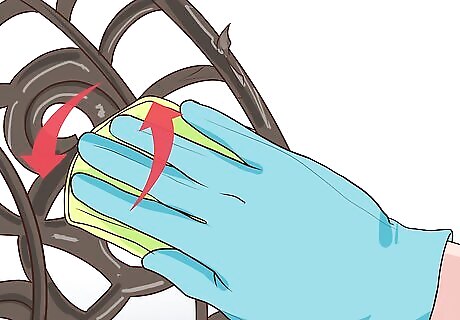
Remove dust and dirt with the soapy sponge. Wipe the wrought iron in a circular motion, working in small sections at a time, in order to fully clean the item. Re-dampen the sponge or cloth as necessary.
Rinse the wrought iron. Dip a clean sponge or cloth into your reserved bucket of water. Wipe the wrought iron again to rinse off the cleaning solution and dirt. Be sure to continue dipping the sponge or cloth in your water bucket to clean the sponge as you rinse the wrought iron. Remember that if you are washing your wrought iron outside, it may be easier to rinse with a garden hose. If the water in your bucket becomes excessively dirty, you may want to dump the dirty water and refill the bucket with fresh, clean water.
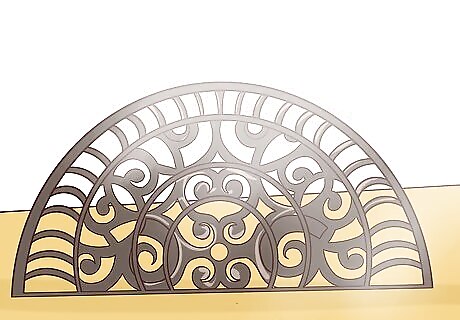
Allow the iron to dry completely. Outdoor items may be left to dry in the sun. Indoor items should be wiped with a clean, dry cloth to remove all excess moisture.
Removing Rust
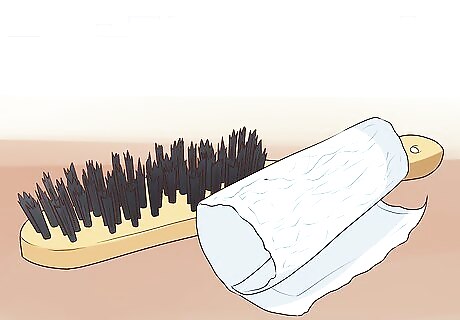
Remove rust with wire brush or sandpaper. Most wrought iron will periodically develop rust. If your item has rusty spots, immediately after cleaning the piece, file down the rust with a coarse wire brush or sandpaper. This restores your product, making it last longer and look like new.
Attack stubborn rust with phosphoric acid. Phosphoric acid converts rust that you can’t remove into iron phosphate, which looks like a hard, black crust. You’ll need to leave the acid on the material for a full day in order for this conversion to occur. Phosphoric acid comes in both sprays and gels. No matter which product you use, be sure to protect your hands and face from the material. Use rubber gloves, a mask, and eye protection when applying.

Brush away excess flakes. After the acid has had time to penetrate, you should be able to use your wire brush to get rid of the remaining rust spots. At this point, your piece should be rust free.
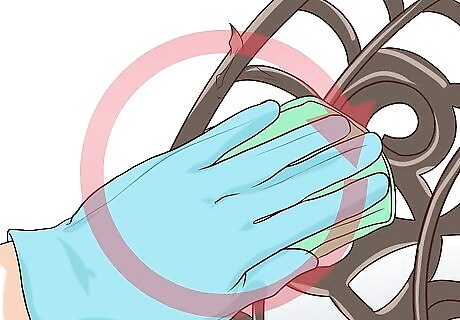
Repeat the cleaning process. Now that all your rust is removed, you’ll need to re-clean the item. Repeat steps one through eight from part one. This will ensure that any tiny remnants of rust are removed.
Maintaining Wrought Iron

Apply furniture or car wax. Once your item is clean and dry again, coat your piece with wax. You can use a clean, dry, soft cloth to apply the product in small circular motions, just as you did with the soapy water. The wax will protect your iron from weather and wear.
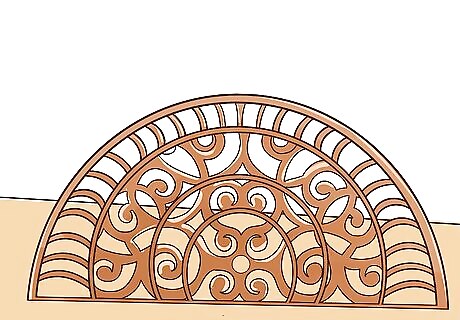
Let the wax dry. The wax needs to soak into the material, so you’ll have to give it ample time to dry completely. Depending on the size of your item, this may take up to eight hours, or overnight. If you’re cleaning outside, check the weather before you start the waxing process. You don’t want it to rain on your item before the wax is dry.
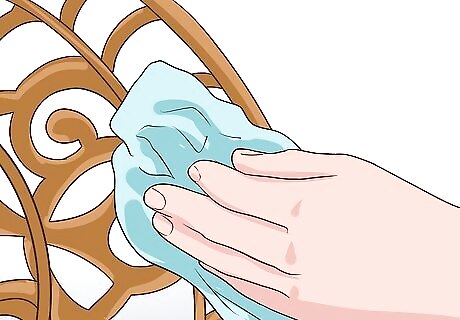
Buff your wrought iron. Once the wax is fully dry, use the reverse side of the soft cloth to polish the iron. Move in the same circular motions you’ve used to clean and apply wax.
Dust your wrought iron regularly. In order to keep your wrought iron in good condition, use a lint-free microfiber cloth or feather duster to remove dust at least once a week. This will cut down on the number of times you’ll have to fully clean or sand your items.
















Comments
0 comment